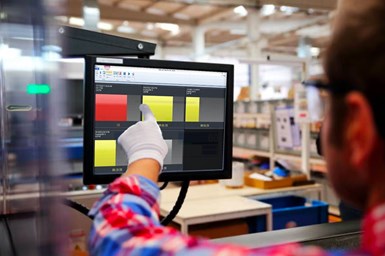Mitutoyo MeasurLink Collection Scheduler Automates Measuring
Mitutoyo's Collection Scheduler module for its MeasureLink suite helps shops keep track of measurement processes across multiple batches or machines.
Share






Mitutoyo America Corporation has released a new module for its MeasurLink Suite.
MeasurLink’s Collection Scheduler allows users to track measurement collection times for multiple active or suspended runs in real-time. The module displays tiles for each run and shows several color stages based on checkpoints to keep measurements on track.
An email can alert the supervisor if measurements don’t start within the specified time. Supervisors can also keep an eye on the entire shop-floor schedule using Process Manager’s new Collection Scheduler view.
Designed for customers that manufacture and measure on a timed measurement schedule, Collection Scheduler works in conjunction with the company’s Real-Time software. Its Andon display and timer turns run tiles red or yellow if schedules are due or about to be due in order to alert operators when measurements need to occur.
The software allows for simple switching between modules, with operators able to select the run due for measurement and launch it in the Real-Time software. They can then suspend the run and automatically return to Collection Scheduler for easy operation.
Collection Scheduler allows users to set schedules for each day or shift to suit organizational needs. Users can also set the size and layout of run tiles to better identify them when managing multiple runs.
Related Content
-
Help Operators Understand Sizing Adjustments
Even when CNCs are equipped with automatic post-process gaging systems, there are always a few important adjustments that must be done manually. Don’t take operators understanding these adjustments for granted.
-
4 Ways to Establish Machine Accuracy
Understanding all the things that contribute to a machine’s full potential accuracy will inform what to prioritize when fine-tuning the machine.
-
Rethink Quality Control to Increase Productivity, Decrease Scrap
Verifying parts is essential to documenting quality, and there are a few best practices that can make the quality control process more efficient.























.jpg;maxWidth=300;quality=90)
